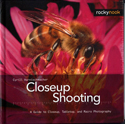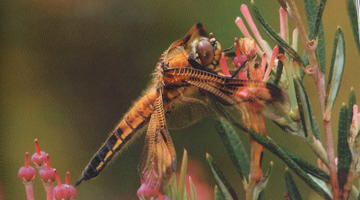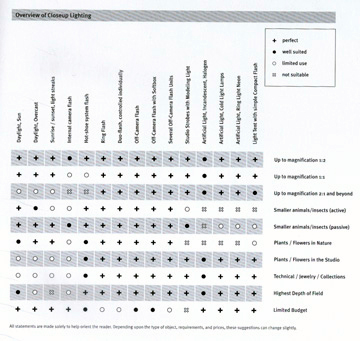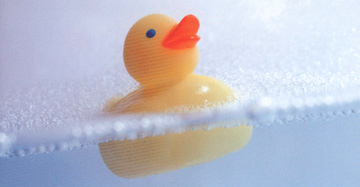
CLOSEUP SHOOTING
by Cyrill Harnischmacher
Rocky Nook Publishers
ISBN 978-1-933952-09-3
US $24.95
We have all been awed by the strangeness and beauty of things beyond our reach. We look to the beasts in the forests and the stars in the universe to show us marvels which can only be captured by cameras with lenses so powerful we can see how these beings thrive in the wild, and we can see millions of light years into the unknown.
But what of the beauty which lies before us in places so obvious that they are passed up by many and seen by only a few? They are all around us. Beneath our feet, in front of our eyes, and at our door ways. You might call these places “macro” places. Small and seemingly insignificant, these “universes” contain a wealth of beauty waiting for you to discover.

When I got into photography back in the ’60’s, my Asahi Pentax had one lens. It was a fast f1.4 50mm lens that captured so many wonderful images so well it took me a couple of years to even think about getting another lens. But when the time came my first choice was a huge Vivitar zoom. It went from 85mm to 205mm, and with my 2x converter I was in fat city with a focal length of about 410mm. The selling point of this lens was the fact that it was also a “macro” lens. It could focus down to 9″ from the subject. That is ONLY 9″. There was no focusing involved. I set the lens at “macro” and that was it. If the front of the lens was 9.5″ from the subject I was WAY out of focus. Of course, by today’s standards, the lens was about 3 feet long and weighed in at about 50 lbs. Well, I may be exaggerating a bit, but you get the point.
The point is that lenses today are created with computers and lasers. Lens coatings have also improved dramatically since the ’70’s. The accuracy and flexibility of lenses have since increased while size and costs have come down. It is possible to have one lens that can be used for portraiture, zooming into the distance, wide angle, and macro photography.
A lot of the problems I had when I first tried macro photography are confronted in this comprehensive publication, Closeup Shooting. The author, Cyrill Harnischmacher, is a photographer and designer who lives in southern Germany. He won the prestigious Foto-buch-award of the German Booksellers Association in 2005. He is a studio photographer by profession, and a nature and infrared photographer by passion. This guy knows his business. He has tried, failed, and succeeded so that we might avoid the pitfalls which are so common place in macro photography. This book tells us what, and what not, to do.
When you first begin to scan through this book you will be entranced by the photographs teeming throughout its pages. They’re a joy to look at. But the real payoff is when you realize that you can get similar results from your own gear (you must have a macro lens, of course) by simply learning a few of the rules governing successful closeup photography.
Our author takes us through the basics explaining about Magnification Ratio and Circles of Confusion. He shows us through examples and charts what Depth of Field means and does. Things like Camera Format, Aperture and Diffraction, and Shutter Speeds are explained clearly and with not too much techno-jargon, which could dissuade an easily confused novice and possibly turn them off to this very accessible and fun technique.
Cyrill then gives us photo examples of Extreme Closeup Photography with all of the technical data in the headings so we can see just what settings were used. He inserts a chart here with corresponding images so we can see just what each setting looks like.
If you’re just starting out there is a chapter, “Choosing the Right Camera,” which will help you decide what equipment you can afford. He even talks about Digital and Analogue Compact Cameras, not just SLR’s and DSLR’s. His chart showing various cameras and their probable performance in set situations is a gold mine and can keep you from making a huge buying blunder.
There is enough information about lenses in this book to satisfy even the seasoned photo enthusiast. From Standard Lenses, Closeup Lenses, and Extension Tubes and Teleconverters, he explains them all. Cyrill also introduces us to Reversed Lenses and Bellows, if you’re not familiar with those tools.
As you can imagine, even beyond macro lenses, there is plenty of specialized equipment for the photographer. Cyrill talks to us about the Zoerk Microscope and Canon Magnifying Lens. Then he talks about Closeup Equipment.
Lenses are nice, but there are other pieces of equipment without which the lens would be rendered moot. If you’re taking a closeup of a frog’s eye, and are in a low light situation, hand holding the camera would most certainly prove to be frustrating. Camera shake would probably be apparent. The lighting may leave your image underexposed. And no telling how the focus may or may not turn out.
Don’t despair. Cyrill will show you what pieces you may need to solve these common problems, and more. Not only does he list and define the equipment—he even shows us how to use it to the best advantage. Here’s a list of some of the equipment he will introduce. Don’t forget, he explains each piece and how it’s used.
Accessory Stands
Brush
Building Blocks
Cable Release, Remote Control, and Infrared Release
Clamps
Colored Foil
Cotton Swabs
Eva Foam
Flashlight
Flash Bounce Shoe Adapter
Flash Brackets
Flash and Slave
Focusing Rail
Gray Card
Ground Spike
Hot Glue Gun
Mirror
Modeling Clay
Right Angle Finder
Reflectors
Tabletop Tripod
Tape
Tweezers
View Loupe
White Balance Card
Please don’t get nervous about all this “stuff.” You don’t need it all, or even any of it, to take great macro shots. But as you get into the art and craft of macro photography you will eventually, and quite probably, wind up with many of these tools.
Cyrill goes on to explain about filters and all they can do for photographers. His examples of various images with different filters is a primer in itself and can help all of us take better photos, macro or not.
In his chapter on Artificial Light he talks about non-flash light sources. Incandescent and Halogen Lights, Fluorescent Lights, Daylight Lamps and Tubes, and LED Lights are introduced to give you some idea of the gamut of lighting available beyond regular flash lighting.
And in Flash Lighting, as you might imagine if you’re not already in the know, there are many choices for types of flash, speed, set up, and accessories made to hold the flash itself. We are introduced to some good ideas like soft boxes on an adjustable gooseneck, or the alternative to that, a flat-panel flash. And, as usual for this book, he gives practical outcomes in the use of any of the suggested materials.
There is a very helpful chapter, Controlling Flash, which shows us how to use more than one flash at a time, how to slave flashes, and even radio transmitter and infrared fired flashes. And the best part of all the technological wizardry and introductions to new possibilities is Cyrill’s practical lessons and examples for all the above-mentioned gear.
The author helps us again with an almost indispensable chart, Overview of Closeup Lighting. Here he mixes each lighting source with magnification ratios and miniature subjects such as small plants, animals, insects, and jewelry. This chart is a lifesaver in a sea of choices which can eliminate hours of trial and error for the new macro photographer.

Sharpness is always a concern of the photographer. In shooting macro, or closeup images, sharpness is crucial. Cyrill’s chapter Strategies for Sharp Images helps us through this important aspect of the craft. He talks about blurring, being out of focus while using tripod, motion blur, incorrect focal points, and handheld closeup photography. This primer of a chapter should be read and reread so that we can have these ideas ingrained in our mind’s eye. This chapter alone can save us hours of frustration.
As Cyrill takes us through the seasons and travel ideas he writes a chapter on Underwater Closeup Photography, which may or may not be on the minds of photographers at any point during one’s career as an enthusiast. Of course special equipment is made to house many different cameras on the market today. It’s not especially pricey, but the good stuff is not cheap. This highly specialized form of photography is a niche which can bring untold rewards in the form of interesting and rare images. His photos in this chapter are beautiful and compelling. This is one of those areas where few usually venture. But lately more and more people are getting the bug and finding out that underwater images are well worth the time and expense.
The chapter on Tabletop Photography is interesting in that it gives a little insight into the advertising business, and how simply one can create a “tabletop studio” in a corner of ones home or apartment. His example of the “flying coffee cup” shows how magic can be done with just a little instruction and a few common tools.
If you’re into advertising and would like to learn about how to shoot products Cyrill tells us how in his Products Shots chapter. The creation part is wide open and up to the photographer. But specific rules and a few basic equipment tools apply here.
The chart on Comparison in Lighting and the example images of each setting provides us with an understanding that lighting is all important, not only in any photograph, but especially in product shots.
Cyrill gently suggests in Imaging Techniques that we should “play” with lighting and try new and different things in order to get familiar with our equipment and just what it is that lighting does in different situations. Try a completely white background. Completely black. Lighting from one side or another. Try strobes, reflections, and multiple exposures. The possibilities are endless, and that’s what makes photography an art as well as a craft.
The beauty of Closeup Shooting is that you can take this craft one step at a time and still come out with great shots. Cyrill even shows us how to build our own equipment, like a bean bag tripod, or a split-level box. What could be more fun than that?

As Cyrill says in his introduction chapter, Insights into New Worlds, his intention here is “not to elaborated on standard sizes (of the subjects at hand), but rather to focus on the opportunities available in the creative handling of modern technology in closeup photography.” If this book doesn’t cover all aspects of closeup photography, it covers the art form’s most salient features, and will assist the uninitiated photographer on a worthwhile journey of new techniques and new worlds, which can only lead to a better understanding of our craft, and maybe even a greater appreciation of our world. Highest recommendation.

Leave a Reply
You must be logged in to post a comment.